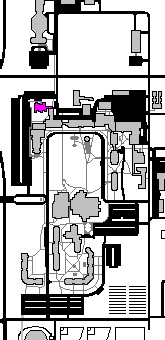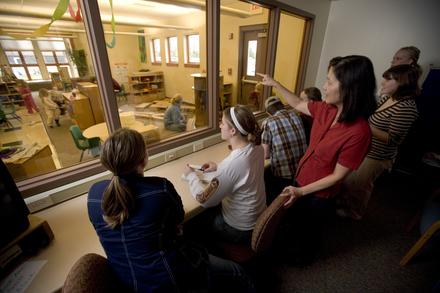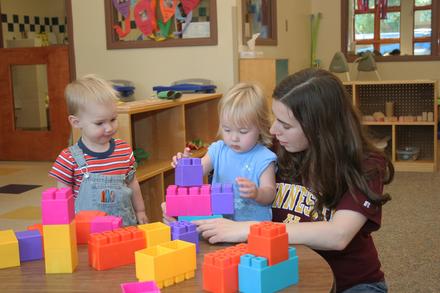
Early Childhood Building
The Early Childhood Building (ECB) serves as the home of the Early Childhood Education degree program, the Elementary Education program, and the Early Childhood Development Center, a campus day care facility. The facility serves as a model high-quality center for child development, and UMN Crookston students gain valuable experience working with and teaching the children here.
Four separate classroom areas are geared toward the care and education of children at different developmental levels. Observation, seminar, and resource rooms provide areas for students to prepare lesson plans and to analyze interactions.

Location on Campus
The Early Childhood Building's primary location is on the northwest side of the University of Minnesota Crookston campus. It's north of the UMN Crookston Library and northwest of Dowell Hall and Dowell Annex.
Early Childhood Building
2900 University Ave, Crookston MN 56716
Points of Interest
The University of Minnesota Crookston's Master Plan recommended relocating the child development laboratory to a new one-story facility dedicated to the Early Childhood Education academic program and designed specifically for meeting the needs of infants, toddlers, preschoolers, school-age children, student teachers, and professional teachers.
In 1998 the Minnesota Legislature approved the U of M Capital Bonding Bill, which included $1.3 million for the construction of the Early Childhood Building (ECB) on the UMC campus. Groundbreaking took place on May 5, 1999; occupation of the new building began on February 14, 2000; and official dedication was held on November 1, 2000.
The ECB was designed and built to meet three interrelated purposes. First, this building was designed to be a teacher training laboratory for students majoring in Early Childhood Education. In this teacher training facility students observe, analyze, and demonstrate principles of child development, education, and family science theories and research. Second, this building is home to a high-quality early childhood care and education program, which serves young children and their families from the University community and the community at large. Third, this building provides a teaching and learning environment for quality educational programming and applied research in child development, early childhood education, elementary education, parent involvement, and parent education.

